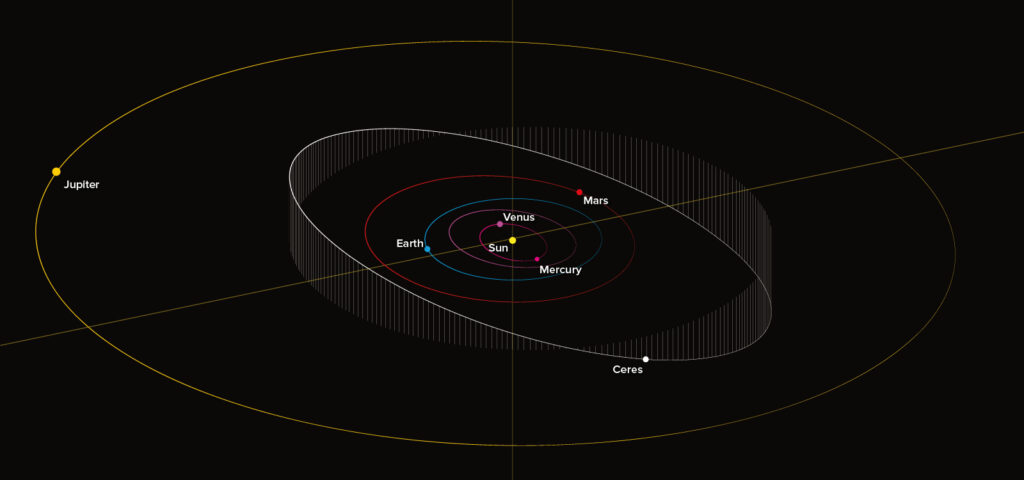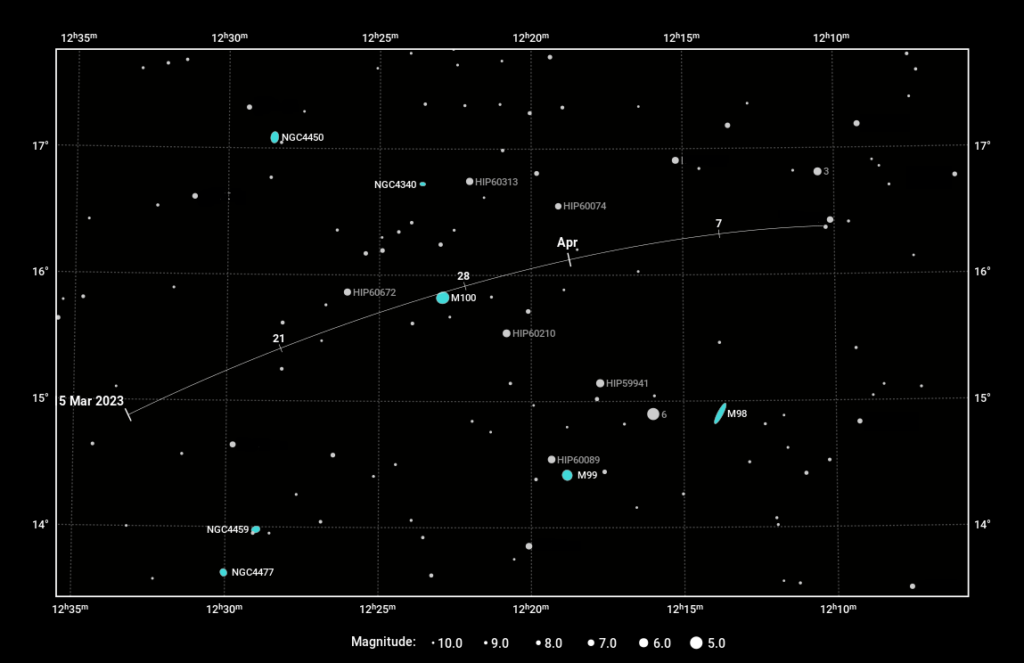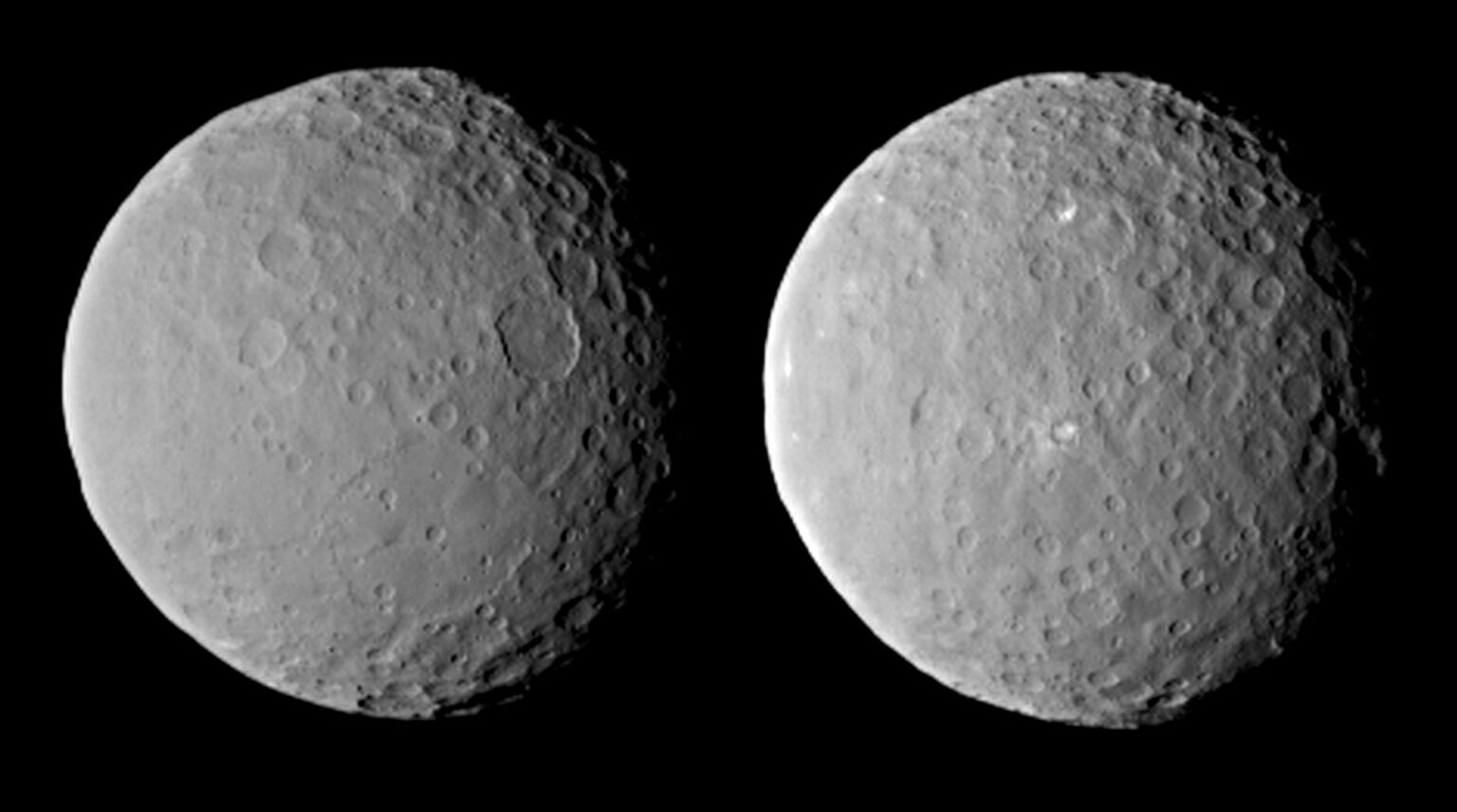This year, the spring equinox falls on March 20. The center of the solar disk will cross the celestial equator and move into the Northern Hemisphere of the sky at 09:20 p.m. world time. On the same day, Ceres (1 Ceres), the nearest dwarf planet, and the first body discovered in the Main Asteroid Belt between the orbits of Mars and Jupiter, will collide. Why is such a coincidence interesting?
The very term “opposition” means that two celestial bodies are located at opposite points of the celestial sphere. Astronomers usually use it in a narrower meaning — to indicate such a configuration when a planet, comet or asteroid culminates exactly half a day after the Sun. Therefore, the full name should sound like “opposition to the Sun by direct ascending”. Of course, the object that passes it does not have to be exactly opposite our luminary, and this is most often impossible. For this to happen, it must move exactly in the plane of the ecliptic, or at least the line of intersection of the plane of its orbit with the orbit of the Earth must be parallel to the line of intersection of the ecliptic with the Earth’s equator. In the configuration of the opposition on the day of the spring equinox, such a body would be located in the sky at the point of the autumn equinox, and vice versa.

In fact, there are no such perfect coincidences in nature, and Ceres is fully involved. Its orbit is inclined to the ecliptic by 10.6°, and during oppositions it can deviate from it almost twice as much (because it comes closer to the Earth). Therefore, on March 20, 2023, it will be located at 17° from the autumnal equinox point. Fortunately for the inhabitants of our latitudes, this will mean that the dwarf planet will be 15° north of the celestial equator, which means that there will be quite favorable conditions for its observations on the territory of Ukraine. On March 27, it will take place against the background of the galaxy M100 in the constellation Coma Berenices.

It is easy to understand that the autumn opposition of Ceres, during which it approaches the point of the spring equinox in the constellation Pisces, from the point of view of its position in the sky for residents of northern latitudes will be much less successful. During them, it has a negative inclination and does not rise above the horizon as high as in March-April of this year. At the same time, residents of the Southern Hemisphere will have an advantage in such cases.
Another circumstance makes the current opposition extraordinary, now from the point of view of our entire planet. At the beginning of December last year, Ceres passed perihelion. It is still in a section of its orbit close to the Sun. On March 20, it will move away by 2.568 AU (384 million km) from our luminary, despite the fact that the minimum possible distance between them is 2.55 AU (381 million km). On the day of the opposition, the dwarf planet will be separated from the Earth by 1,599 AU (239 million km). With an average diameter of 940 km, the angular size of its disk will exceed 0.8 seconds, and the visible brilliance will be the 7th magnitude. This will allow powerful ground and space observatories to get clearer images of this object.

Interestingly, there is no change of seasons associated with the sun’s inclination on Ceres, and the equinoxes are quite conditional there. The fact is that its equator is inclined to the plane of the orbit by only 4°, so its orbital motion practically does not affect the duration of the day and night (in general, Ceres rotates around its own axis in a little more than 9 hours). A much more tangible factor for it is the relatively large orbital eccentricity, which is 0.116 — more than that of Mars. Consequently, it is now summer on the dwarf planet lasting almost 14 Earth months, but soon it will end, and the same long global autumn will begin there. The total duration of the year on Ceres exceeds 55 months (4.6 Earth years, or 1,682 days).
Follow us on Twitter to get the most interesting space news in time
https://twitter.com/ust_magazine

